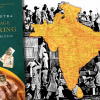The Great Divide that brought them together

While the Partition of 1947 is a chapter that historians are constantly bringing up, one question rarely explored is what does the Partition mean for the Millennials and Gen Zs? How much do our younger generations know of the significance of the Great Divide?
In the middle of 2019, I had a proposition from a faculty member of The City University of New York (CUNY), of being the part of a project that involved teaching Partition Literature to university students of four different countries. I was somewhat skeptical in the beginning, but after careful consideration, I decided to take it up. The students came from three universities of Bangladesh, India and Pakistan and they were to discuss on a very sensitive but important topic – the Great Divide of 1947. The fourth institution was a college affiliated with CUNY.
As teachers across borders started to connect, we realised that it was indeed a very exciting scenario, with a number of challenges too. I was teaching a Master's class of 13 students at ULAB and I found out early that my students (between 22-28 years), had only some vague ideas about the 1947 Partition. However, having anticipated this, I had chosen three readings on this topic, namely, "The Great Divide" by William Dalrymple, "Partition and the Bangladeshi Literary Response" by Kaiser Haq, and "Rabeya Apa," a short story by Ashraf Siddiqui (Translated by Arifa Ghani Rahman).
Dalrymple's article gave the historical perspective of the 1947 — how the two communities of people, the Hindus and the Muslims of undivided India, who had lived together in comparative harmony for centuries, became bitter enemies within just a few decades, and how the 1947 Independence saw the greatest human migration in history. Dalrymple also provided the gory details of the killings that happened at the time.
What it did not cover, was elucidated in Kaiser Haq's article, how the eastern border was much less affected and how skirmishes took place through the next 24 years in East-Pakistan (culturally and ethnically very different from the West-Pakistan) and finally completed in 1971 through the birth of Bangladesh. The last piece, the short story "Rabeya Apa," is the tale of two idealists who lived through the partition and sacrificed utmost till the 1952 Language Movement. The three pieces, together, I felt, uphold a very brief history of the Partition from the perspective of Bangladesh.
As teachers, we had to be very cautious as the Partition involves three countries with a long history of conflicts and atrocities. While broaching various issues, I maintained that they must look at the topic from academic perspective and not allow themselves to be carried away emotionally.
However, I discovered soon that sometimes emotions save the day. After a brief period of discomfort, the students warmed up to the subject-matter. Apart from reading, discussing and writing in the class, this project had two very interesting segments. With the help of COIL (Collaborative Online International Learning), the students of the four institutions participated in discussions on a google document. There were guided questions on the readings for them to understand the socio-political and economic situations of the undivided India. This platform enabled the students also to connect and understand the other cultures.
The second segment was a Facebook platform where participants were told to upload a brief video clip of about 3-5 minutes introducing themselves and some interesting aspects of their country and culture. Almost everybody had something to say or show. Starting from their families, they shared their hobbies, habits, cultural heritage, architectural feats, food — everything one could think of. The comments, jokes and stories they shared were heart-warming and one of my students exclaimed, "Why, they're like us!" Then they were all giggling sheepishly.
Throughout the course, I felt that more than the readings and poring over maps, what helped the students more in understanding the complexities of the Partition was talking and discussing issues with their peers across borders. One of my students confessed that her family members (her great grandfather's family to be exact) were converted Muslims. They chose to become Muslims when they decided not to leave for India in 1947. She further confessed that they rarely talk about it even now because her family considers it a shameful act. The discussion threads in the classroom made her realise that many others had done it during that time. I will always remember this moment in the classroom, when all my other students said in unison, "No, that was not your family's fault. It was something that time demanded. And it is unfortunate." Many others discovered from their folks at home how things were for their grandparents' generations, how choices made them change countries and identities. I believe, during those weeks, the students transplanted themselves in 1947 and re-lived the moments experienced by their ancestors. For the students of the US college, this course was a revelation because most of them knew nothing about the Great Divide, an event which is no less traumatic and significant than the European Holocaust.
As I look back, I see that the best thing that happened with the Partition Project was that it brought the youngsters of four nations together as they recognised themselves as characters in one long story — the history of the Great Divide. I, along with my students, learnt that there might be many divisions because of political and other reasons, but at the end of the day, it is still compassion and humanity that can bring people together.

 For all latest news, follow The Daily Star's Google News channel.
For all latest news, follow The Daily Star's Google News channel. 








Comments